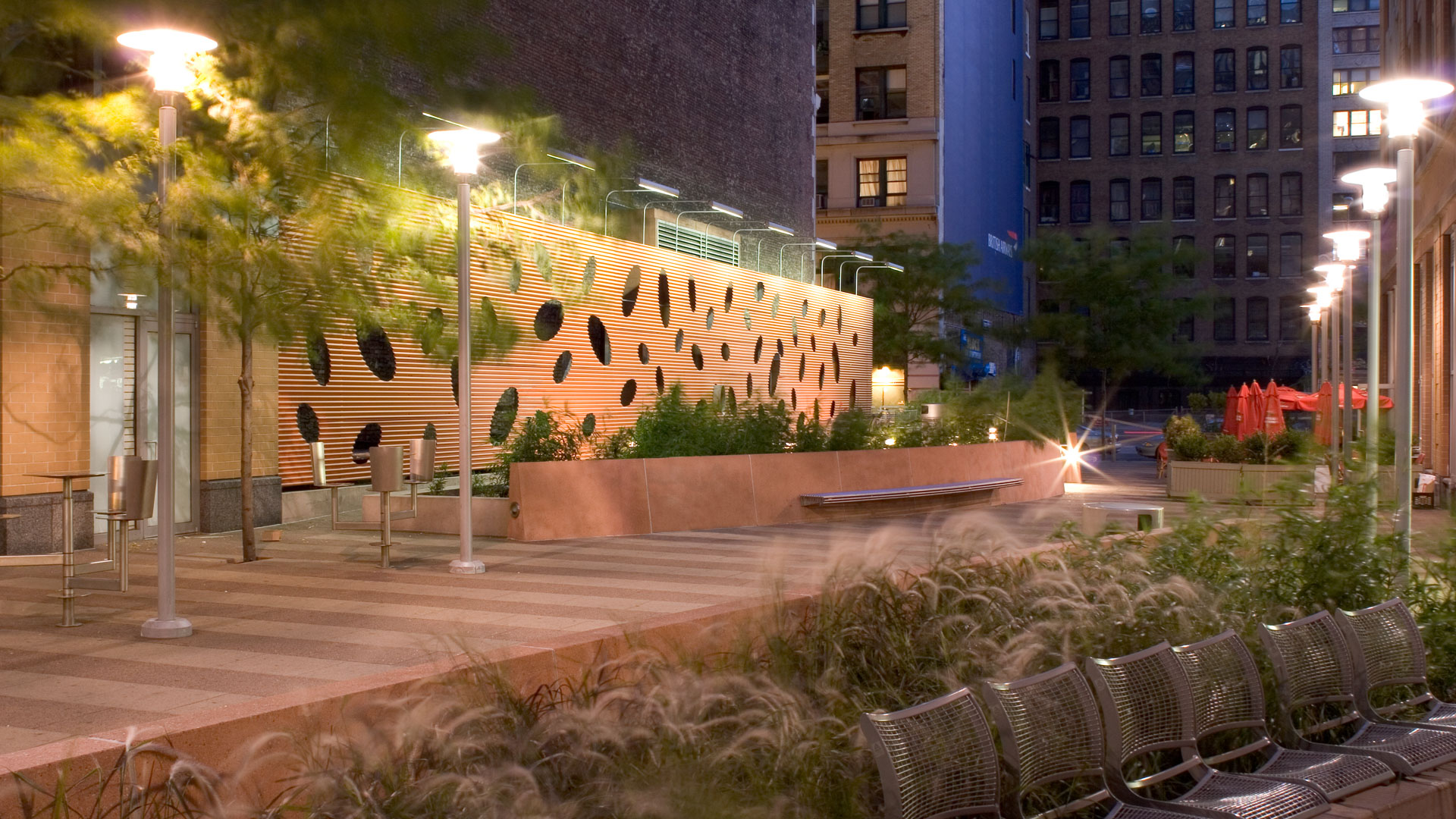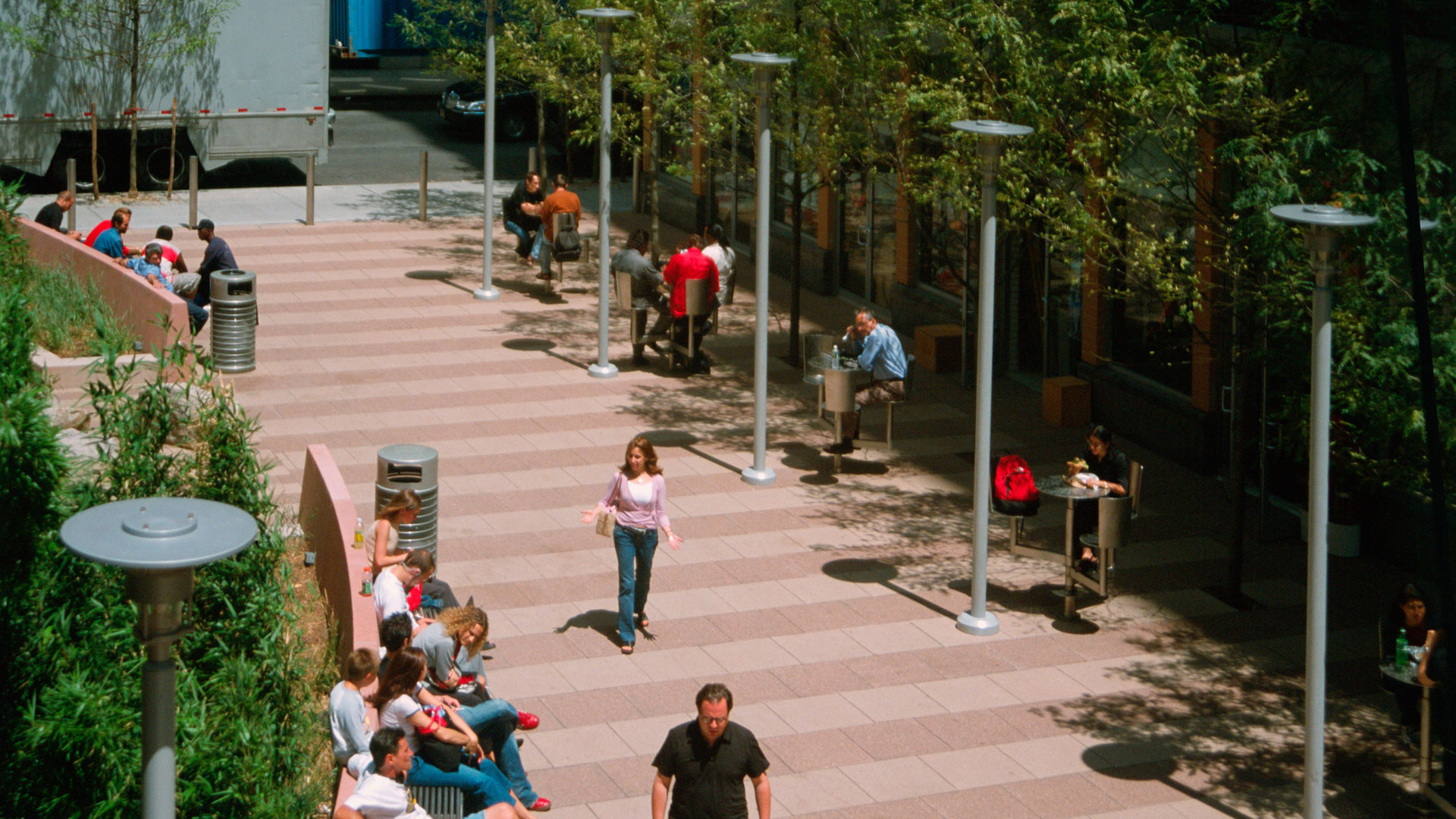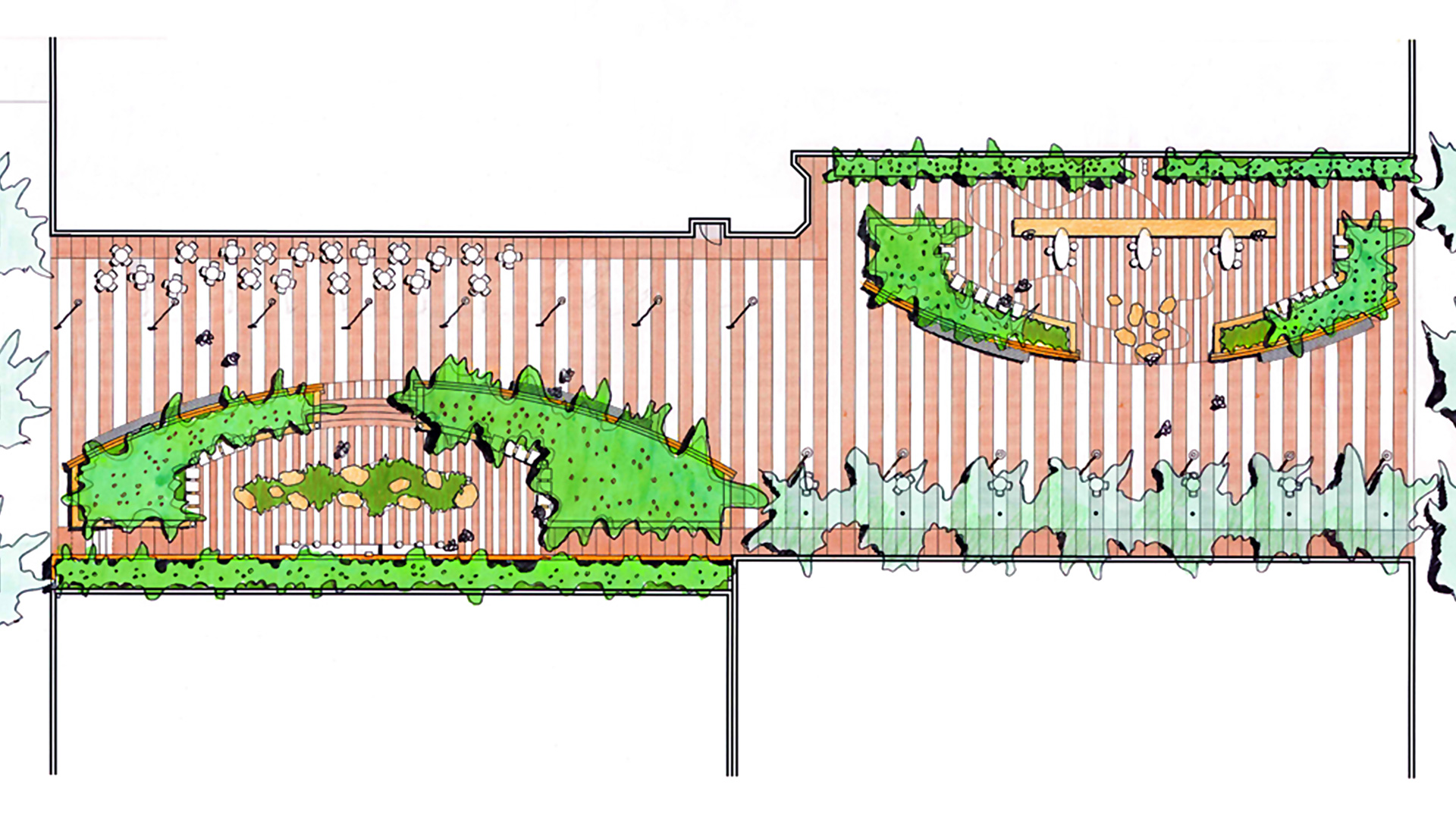Capitol Plaza is located in the lively neighborhood of Chelsea Heights amid weekend antiques markets, art galleries, hip hop stores, design studios, residential towers, and Flower District shops. This narrow swath cuts through a block just east of Sixth Avenue and is one of dozens throughout the densest portions of Manhattan that bring a moment of respite and social exchange to millions of New Yorkers: all within a few blocks of where they work or live. The plaza offers a place to pause among lush bamboo groves and ornamental grass plantings, distinctive contemporary seating and adjacent cafes and shops. It has struck a chord with the neighborhood and accommodates the flow of its diverse constituents throughout the days and seasons.
Its success rests primarily on the research that led to its design program and its wide range of seating options. Curved, battered planter walls slice through the plaza, organizing it into distinct areas with varying degrees of intimacy and enclosure. Along the east side shallow steps lead to a secluded, arc-fronted terrace area, backed by the plaza’s master stroke: a 90-foot-long, two-story-high orange wall, perforated with a rhythmic series of oval cutouts, revealing a bamboo grove. One of the cutouts is a spout for the fountain. Visible from Sixth Avenue, this vibrant panel is an inviting and inventive eyecatcher.
Custom-designed stainless steel revolving stools around bar tables, warm chunky rocks, concrete seat walls and benches with attached cafe tables, elliptical chess tables and steel mesh chairs are fully occupied when the weather permits. The design program, forms, materiality and furnishing have taken their cues from the neighborhood character and creative-class constituents. Capitol Plaza stands as an example of the powerful impact small social spaces can have on urban life and the vibrancy of our neighborhoods.
Soundview Park
Soundview Park, built on 212 acres of landfill at the junction of the Harlem and East Rivers in the South Bronx, is the most significant recreational facility in Community Board 9. As part of the PlanNYC initiative, Thomas Balsley Associates was selected as the lead designer of Soundview’s master plan. This brownfield remediation will drastically improve both ...
Ferry Point Waterfront Park
Since the closing of a city-owned landfill in 1963, the site’s transformation into Ferry Point Waterfront Park has been a long, complex process. The new Ferry Point Waterfront Park will be a long linear eastern ecological extension of the previously built and conventionally programmed western Ferry Point Park. Part of a Jack Nicklaus-designed golf course, this...
CODA Tech Square
The new Coda building in Atlanta’s Technology Square represents a $375 million investment in the budding innovation district: the Southeast’s premier innovation neighborhood. The area has attracted industry innovation centers that include AT&T Mobility, Panasonic Automotive, Southern Company, Delta Air Lines, The Home Depot, Coca-Cola Enterprises, NCR, a...
Jinbocho Redevelopment
Situated in central Tokyo’s university and publishing district, this new mixed-use project brought urban streetscape character to its immediate neighborhood through the introduction of plazas whose fountains, seating areas, cafes and sculptures serve residents, workers, and the community as a refuge from the busy streets.
A diagram of pedestrian flows t...











